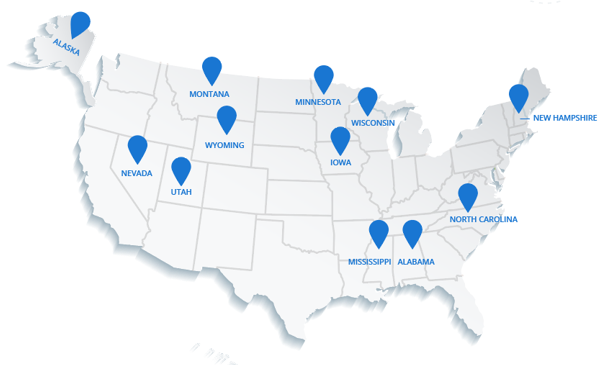If you are currently seeking APRN opportunities, click on the links below to apply for openings with healthcare leaders.
- Nurse Practitioner - Telehealth & Hospital
- CRNA - Per Diem & Travel Team
- NP / APP / PA - On Demand Travel Team | Flexible & Competitive Pay
- PA - Cardiology | Mobile Setting
- Physician Assistant - FT/PT | Bilingual Spanish Speaking
- Nurse Practitioner - AC Peds | CVICU | Top Children's Hospital
- CRNA - Anesthesiology | Outpatient or Inpatient
Evaluating APRNs and PAs salary, benefits, and total compensation is key when considering a job offer or negotiating salary. We at DirectShifts are here to help Advanced Practice Providers (APPs) and their employers understand how to evaluate salaries and compensation. APPs, including Advanced Practice Registered Nurses (APRNs) and Physician's Assistants (PAs), salaries comprise a multitude of criteria, including years of experience, specialty, schedule, location, and equity between providers. In general, compensation is a combination of the salary employers pay employees, combined with the benefits package. Understanding what makes up the value of ya total compensation package is helpful for both those seeking employment and those doing the hiring to ensure fair and equitable pay.
Benefits and Total Compensation for APRNs and PAs
When evaluating an APRN or PA salary, it is important to understand total compensation not just base salary alone. Benefits can make up 25-30% of the total compensation package, which includes salary plus benefits. Always ask the employer what percentage of the total compensation is allocated to the benefits package. Total compensation can be a bit misleading if you are negotiating on just the salary figure alone. For example, a person making $100,000 in salary with 20% of the compensation allocated to benefits is actually making about $125,000. If the compensation allocated to benefits is 30% but the base salary stays the same, that number rises to $142,857. The first, and largest, benefit is typically healthcare. Employees should take this into account when evaluating compensation, as the estimated burden is around 30%. Other examples of benefits may include reimbursement for state/board licensure, prescriptive license, and certifications (BLS, PALS, ACLS), as well as relocation funds, sign-on or productivity bonuses, tuition reimbursement, loan forgiveness, continuing education reimbursement, paid time off, profit sharing, and/or salary increases. Not all employers will offer all of the potential benefits, but it never hurts to ask! Also, be sure to do your research. For example, relocation benefits, while playing a role in total compensation, are typically only of interest to those having to move to a new location for his or her employment. This particular benefit may vary by location and income tax may alter the way the benefit is received.
Evaluating APRN and PA Productivity as Part of Compensation
One of the most important factors to consider when evaluating an APRN or PA compensation package is the bonus structure for productivity. The practice of receiving productivity benefits is increasing for APPs and is determined by a variety of factors, including number of patients seen, billings and collections, patient satisfaction, etc. Productivity compensation is typically paid in a percentage, with the greater productivity receiving the greater percentage of compensation. If offered, productivity bonuses are a key way for APPs to increase their overall annual compensation. It is common for employers to use APRN and PA bonuses as a means of motivation, as well as a reward, for exceptional work. One way to calculate bonuses is based on collections, which involves what the employer bills and collects from the patient/insurance company. The bonus is then determined from a certain percentage of the revenue the employer receives. A second way to calculate the bonus is based on the number of patients seen per session. There is typically a base number of patients required to be seen by a provider, and the employer will provide an additional amount of money for each patient seen above the baseline number. Productivity compensation also has an added benefit for healthcare systems to see the value and impact of APPs in a concrete, numerical way. Increased visibility among APPs and peers has been found to improve performance and encourages excellence. By obtaining increased productivity, both the APP and the institution profit from the increase in revenue.
Evaluating APRN and PA Salary Increases as Part of Compensation
Another factor to consider when evaluating APRN and PA compensation are salary increases. For example, in 2020, CRNA and PA first assist salaries increased around 8% per year, while psych nurse practitioner salaries increased by 5%. Hospitals have a high demand for surgical-specialty APPs and CRNAs, as these positions make less than the salary of the physician specialists, which therefore lowers the overall cost for the organization. In contrast, Psychiatric Mental Health Nurse Practitioners (PMHNPs) and psych PAs have a high demand, but their services are not fully utilized at this time, and therefore aren't as financially beneficial to the institution. Over time, the hope is that this branch of APPs will continue to grow, too, as there is undoubtedly a need. When considering any offer, be sure to research data about the salary outlook for your position, and ask the hiring manager what your annual percentage increase is expected to be.
Evaluating APRN and PA Compensation by Specialty, Experience, and Environment
When evaluating compensation and APP salary data it is important to compare apples to apples, so to speak. Salaries, and percentage of salary increase per year, is dependent upon specialty, years of experience, and environment. For example, according to data, Primary Care PNPs with only 1-2 years of experience are among the lowest paid, making around $90,000. In contrast, an acute care PNP with the same amount of experience on average earns over $100,000. A general PA with 1-2 years of experience makes around $100,000, while a PA First Assist makes around $90,000. However, with 10 or more years of experience, a general PA has an annual salary of around $130,000, while a PA first assist with the same amount of experience can make $175,000. As such, while your starting salary is essential to the trajectory of your income, it is also important to discuss expected salary raises with an employer prior to accepting an offer. DirectShifts suggests asking what the annual expected salary increases are, in addition to discussing any maximum salary caps that exist within the institution. Another factor to consider when evaluating salary is work location. Location has an impact on APRN and PA salary is calculations. This varies across geographical areas due to cost of living variance, as well as work environments, such as a hospital or outpatient clinic. Clinics lean heavily on market data and current colleague salaries to determine the pay that will be offered to new-hires. In contrast, hospitals typically use a tiered system based on schedule, shift, and years of experience. Market adjustments assist both organizations and employees to ensure they are competitive, and it also helps ensure that newly graduated APPs don't make a higher salary than counterparts with more experience in the same job role. In terms of geography, salaries in the Midwest, Northern California, Southern California, Seattle, and New York have all had increases in salary percentages in 2020.
Evaluating APRN and PA Opportunities for Other Factors
Despite the importance of thoroughly understanding your total compensation offer, evaluating an APRN or PA employment opportunity goes beyond compensation. There are unquantifiable values such as culture and support to be considered. The investment the organization makes in recruitment and retention of APPs is crucial to remaining competitive in the market. Recruitment focuses on a quality compensation package that offers substantial benefits in addition to base salary, as well as an infrastructure that enables leadership to support the APP role. Once an employee has joined an organization, retention is a profitable and vital focus. Investment should be focused on APP leadership, providing educational and professional development opportunities, protected time, competitive compensation, a quality orientation process, and a schedule designed to support a 40 hour work week with minimum (30%) nights and weekends for 24/7 providers. Supporting APPs throughout the process of hiring and employment is more cost effective than turnover, making this crucial to a system's financial stability and success.
This article was originally published on Melnic by Jill Gilliland. Melnic was recently acquired by DirectShifts.
.png?width=50&height=50&name=Cube-Logo-150x150%20(1).png)
March 9, 2022




Comments